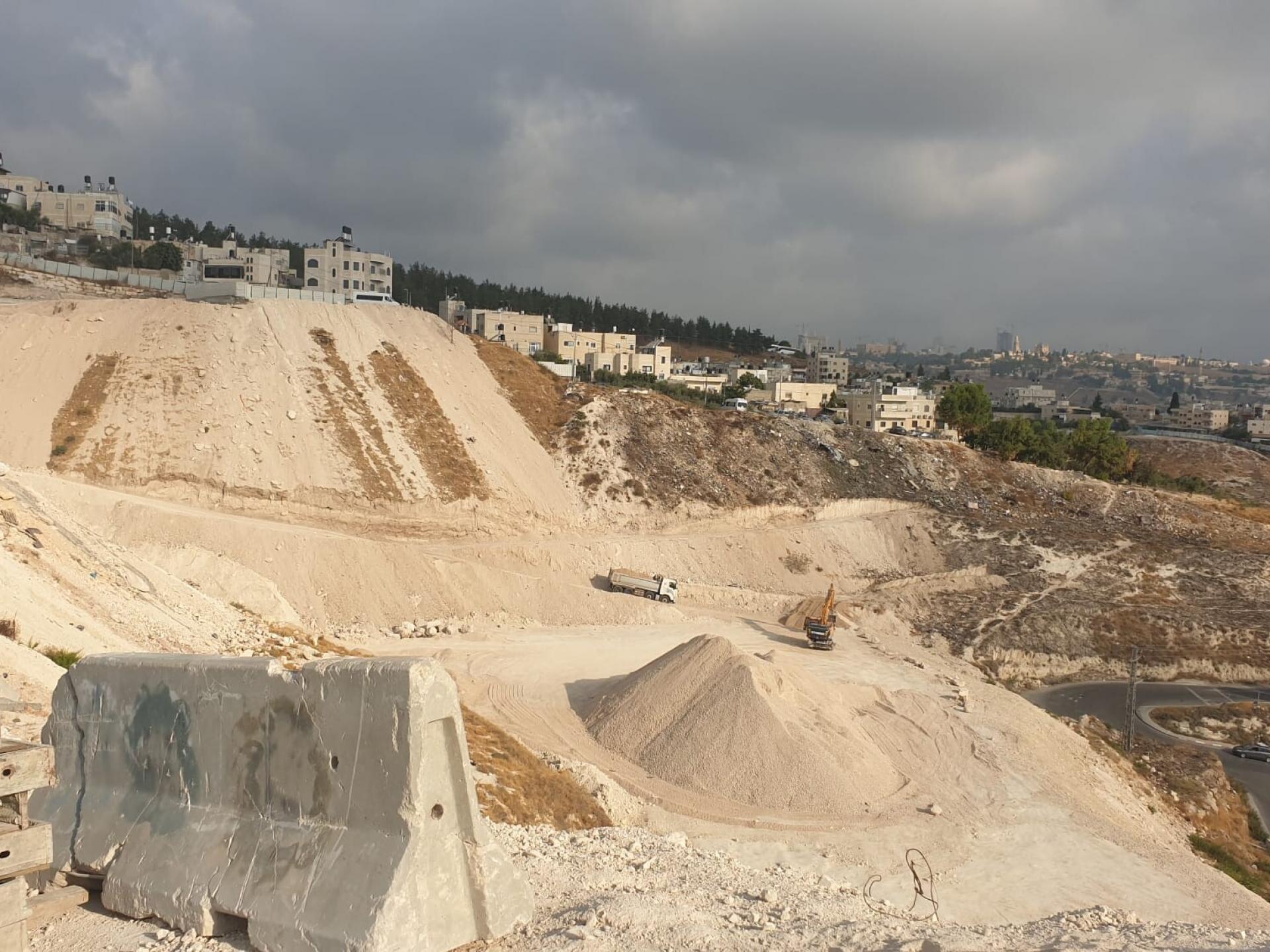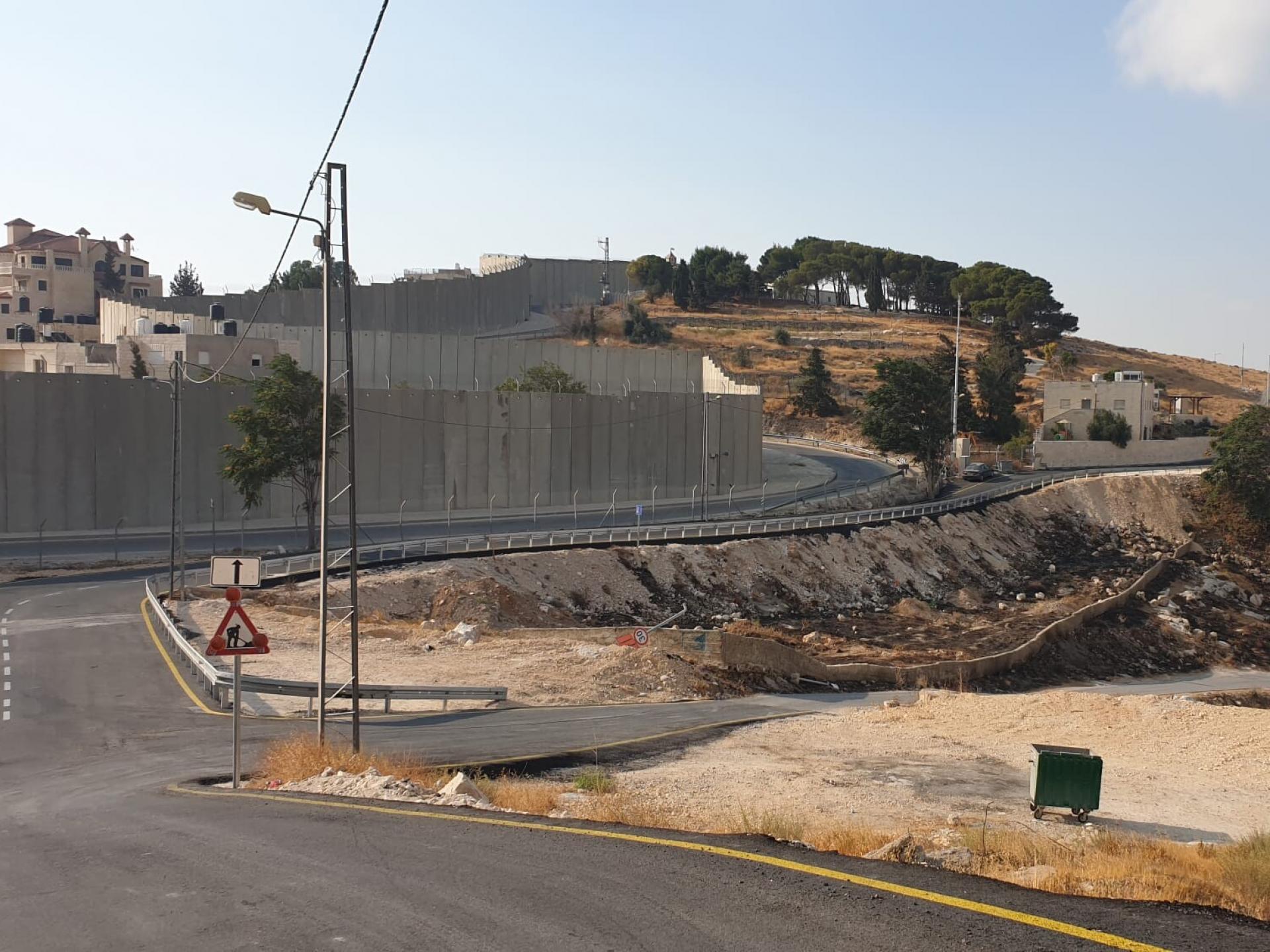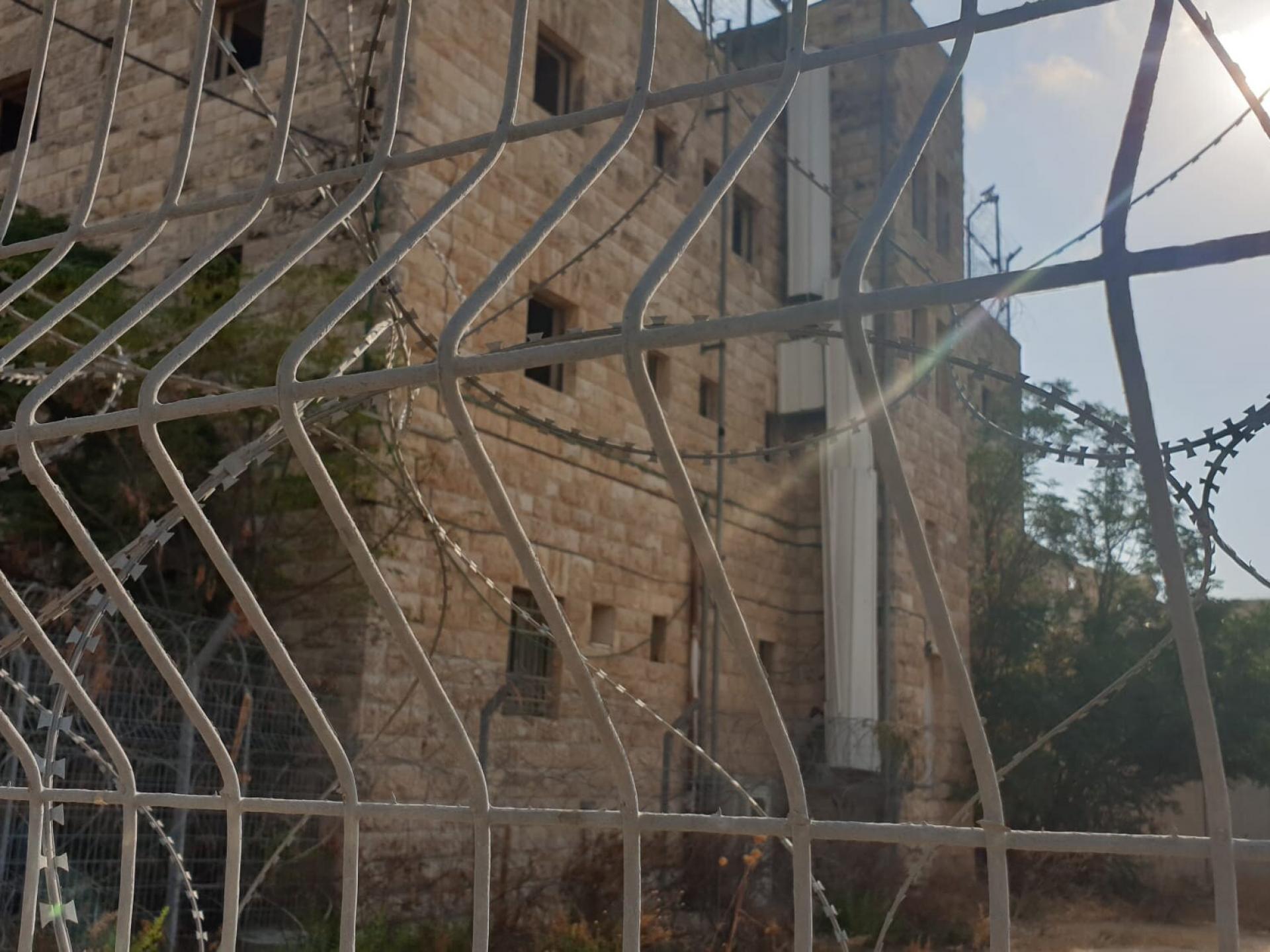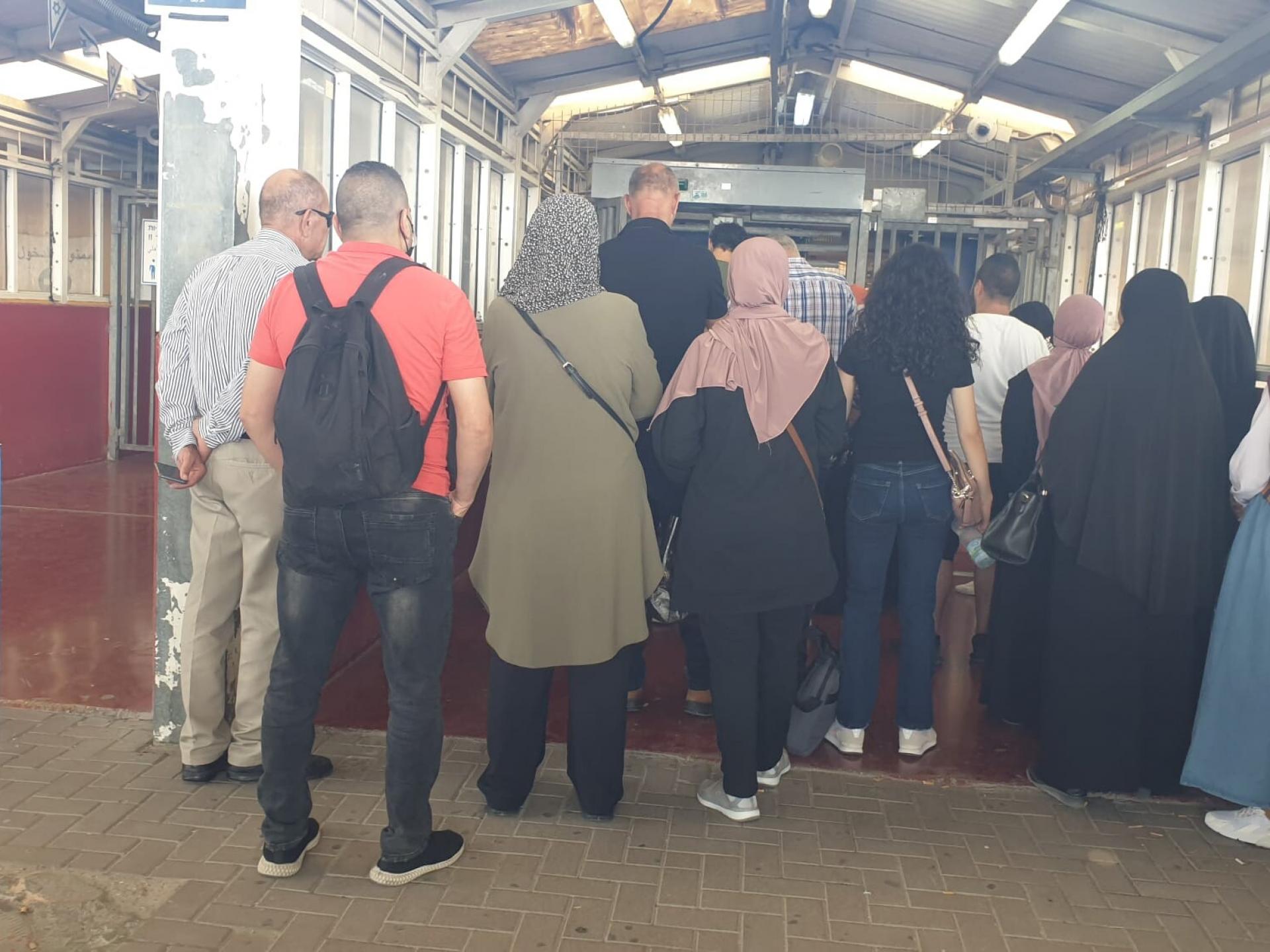A tour in Palestinian neighborhoods and checkpoints in East Jerusalem
7:00 Checkpoint 300, Bethlehem
Sunday morning brings a lot of workers into Israel. Today there are six open crossings and there is no pressure on the Israeli side. We came to document and also make sure that our complaint about not opening the special passage for women was dealt with (when they are forced to go through with the men in the same passage, the women suffer from harassment and urgency in the rush of the morning). Only last Friday we received a pleading phone call from a Bethlehem resident, who was locked with several other women in the women's crossing, because only the door on the Palestinian side was open, but the exit on the Israeli side was locked. They got stuck without being able to call the transit workers and were rescued only after Hannah called the DCO.
Today there were senior police officers, Border Police officers and security personnel present, who knew about the case and said it was a malfunction, but did not intend to install a warning button inside. We asked a Border Police officer who was there to show solidarity and pay attention to what was happening in the women's crossing. Her surprising response was: "Do not ask me - first of all the pictures from there do not reach me and secondly I am racist." We asked why she was racist and she answered honestly: "I am worn out. I have been here at the checkpoint for two years." We wished her a quick release. Best for all concerned.
Nof Zion Settlement Neighborhood - Travel via the new South American road that connects to the Armon Hanatziv neighborhood
We saw continued work to upgrade the Umm Leeson bypass road, which leads from the Darga Bridge to the Armon Hanatziv neighborhood. This will be the highway from Tekoa and its metastases, and also a road parallel to Jerusalem for the residents of Har Homa. As we emphasize: The name of the recent settler game is - separate highways from the West Bank to Israel. And they are very successful in fulfilling this with the full support of the Ministry of Transport.
The Nof Zion neighborhood, which was not a real estate hit, is about to expand. To this end, huge pits open up on the northeastern slope and supports and foundations are laid. It isn't clear whether the amazing view that the existing houses overlook will be preserved, but what is certain is that Palestinian Jerusalem residents from the area have no chance of being accepted as residents in this extension. A Palestinian acquaintence tried in the previous round and was refused outright.
Travel through Ras al-Amud and the olive settlement to Abu Dis. A visit to the Cliff Hotel and the walled road leading to the Kidmat Zion settlement
Where the need to make it easier for Israelis to travel to Jerusalem has disappeared, the road renovations also end there. The road that rises from the American road to Ras El Amud is a steep and narrow ascent, which is always busy. The settlement of Ma'aleh HaZeitim, below the southern Mount of Olives, expanded several years ago, and the residents' living expenses and travel expenses are supported by Israeli taxpayer money.
Just past the gas station on the old road to Jericho, the wall was erected and the Cliff Hotel, declared an "absentee property," stands up the hill. The wall is adjacent to the hotel from two directions and the hotel is now abandoned and destroyed, after years of serving as a Border Police post. Next to it is a red sign "No entry to the security road" and the road continues to a small settlement called Kidmat Zion waiting to expand. In the meantime, access to it has been upgraded with a small apartheid road. All other residents coming from the direction of Wadi Kidron make do with a road that is of the East Jerusalem standard.
Olive Barrier (Ras a Sabitan)
At eight-thirty the checkpoint is usually already empty of its passengers. Its geographical remoteness and steep ascent towards the old city make it so difficult for pedestrians (only they are allowed to pass through - there is a gate for cars that has been sealed and locked since it was created), so we are used to seeing great pressure there only in very early hours, Ramadan, or during acute problems at the Bethlehem checkpoint. The Jerusalem-surround DCO occupied it until last year, when it finally closed.
But, every day a checkpoint contains surprises. After short conversations in the shed with those waiting and a cute kid, who sells a sweet Chai on Summer holiday, we head into the checkpoint. Only one position is open and passage is very slow, with a break in the opening of the carousel between every passer, as though the person manning the position is busy with another activity. In a short time, a queue of about 25 people accumulates, especially women and also some families. Most of them are urban from Azaria or patients who come to the hospitals in East Jerusalem located in the a-Ram ridge. One such family is sent back, even though the soldiers in the armored position were shown their transfer clearance in the app. The excuse - does not appear on our computer and we do not read Arabic. That is - it s not our job to find out.
A phone call to the North-Enveloping DCO reveals that the permit is for tomorrow. A great disappointment. But could not the soldiers themselves translate in Google or call the DCO to find out why there is a mismatch between the computer and the phone app?
The checkpoint commander could not be found in order to ask for reinforcements at the opening of another passage, but the nice N. from the enveloping DCO managed to convey the message to the checkpoint workers. Another queue was opened. It is also terribly slow. Only this time these were people over the age of 60, vaccinated twice, who say who pass here often, and are on their way for tests. Again the DCO is called and the answer - They certainly have passage permits. Now came the persuasion phase. The two idle soldiers sitting in the position refused to talk to the DCO and settle the matter. Alternatively, they took my ID card, refused to return it and called the checkpoint commander apparently to get rid of us. After wasting additional time and worrying the Palestinians even more, a connection was established between the commander and the DCO.
It turned out that the checkpoint computer was not updated with procedures that allow the passage of vaccinated adults over the age of 55. Interesting how long ago the update went into effect. At the checkpoint, they emphasized with satisfaction - the failure is that of the DCO. We must point out that the checkpoint commander was very kind and so were the two security guards who accompanied him. The soldiers' computer at the station only shows red (not passing) or green (passing) and they actually have no access to additional data.Is the coordination so sloppy? In any case, we intend to file a complaint against the two indifferent soldiers who manned the position. They made many people suffer this morning.
Note: In these tours we repeatedly discover the existence of inefficient procedures, degrading treatment, people falling between the cracks due to mistakes and indifference. It is likely that many harsh and inhumane cases are simply going under the radar and that with too many units operating in the space of one checkpoint, the result is actually ineffective, and underscores all the many impediments imposed on the lives of Palestinians.




